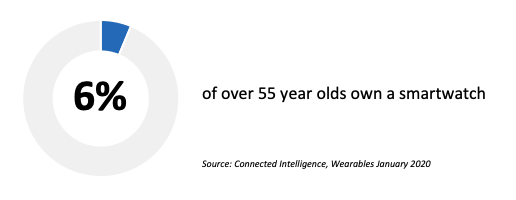
Tracking the virus
It was inevitable that wearables would be adapted to address the COVID-19 issue. First up is the Estimote range of devices that use a mixture of GPS, proximity sensors via Bluetooth and LTE. The idea of the device is not to detect if the wearer has COVID-19, but rather to track all of the people they have been in contact with, and thus is aimed at people working in factories and the like. Once the wearer updates their health status to show they may be infected, the solution can track all other workers that they have been in contact with in a given period of time, taking the guess-work out of the social history (assuming, of course, that all workers are wearing the device).
The NPD Take:
- Does it help prevent COVID-19? Unfortunately not. But it can limit the potential spread of the virus within production and warehouse environments.
Stop touching your face!
Slightly Robot has redesigned its wearable, creating a product aimed at stopping you from touching your face. The Immutouch is a wristband that vibrates if you touch your face. The goal is to firstly help the wearer realize how often they do reach for their own face and then, over time, train the wearer to stop. The wristbands cost $50 and, according to Slightly Robot, that is pretty close to the production costs.
The NPD Take:
- We can expect to see a flurry of wearables activity over the coming months as companies look to adapt their devices to be more focused on health and specifically on stopping the spread of COVID-19.
- Wearables have always struggled to attract an older audience… but that is the most susceptible to COVID complications. Now may be the time to try and bridge the gap with products that can help protect the older generation.
Beans…
A few months ago, we mentioned rumors of a new hearables from Samsung that could be bean shaped. Well, the first details appear to have leaked via WinFuture and it does indeed appear that Samsung plans to launch a new earbud that is shaped like a kidney bean. The benefit appears to be that the device sits flush with your ear, rather than protruding, and we assume that the shape means that it will sit comfortably in the ear without the need for silicone tips. This also suggests that the device will be more than just ear buds and could, indeed, support heart rate and other fitness tracking.
The NPD Take:
- The ear bud market offers a lot of potential to become more than simply a music and assistant interface. While it won’t completely take over the role of another wearable (i.e., the watch) as you are unlikely to wear the buds the whole time, they will address those peak exercise moments such as running.
- What could be interesting is a combination of ear buds and, say, a smart ring, rather than continuing to push the smart watch as the core interface. While smartwatches are seeing healthy growth, not everyone wants to go back to wearing a watch. Expect to see newer form factors growing in demand (and development) in the next year or so.